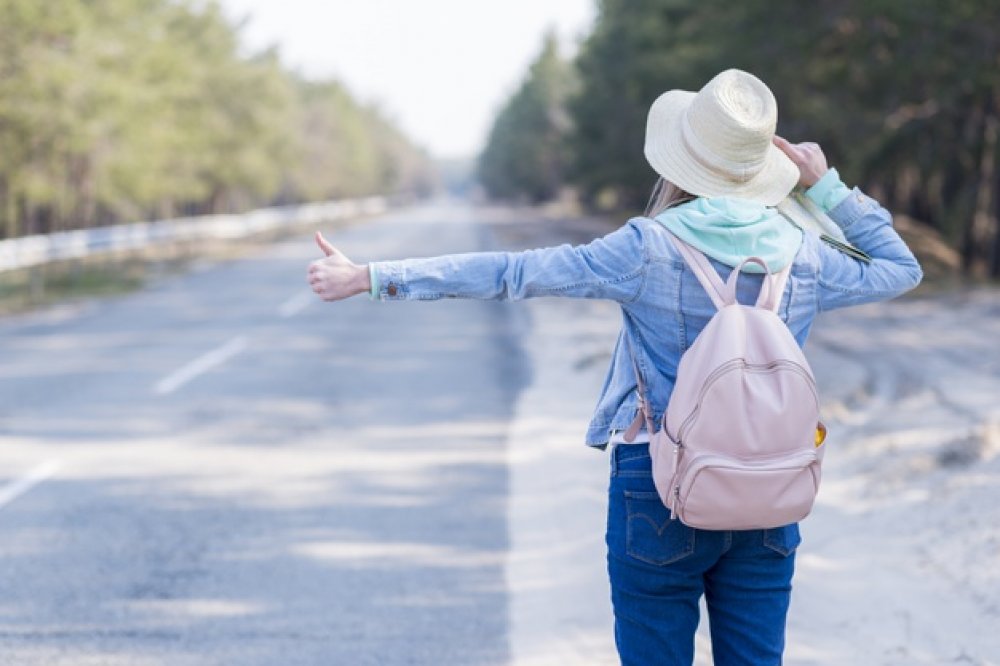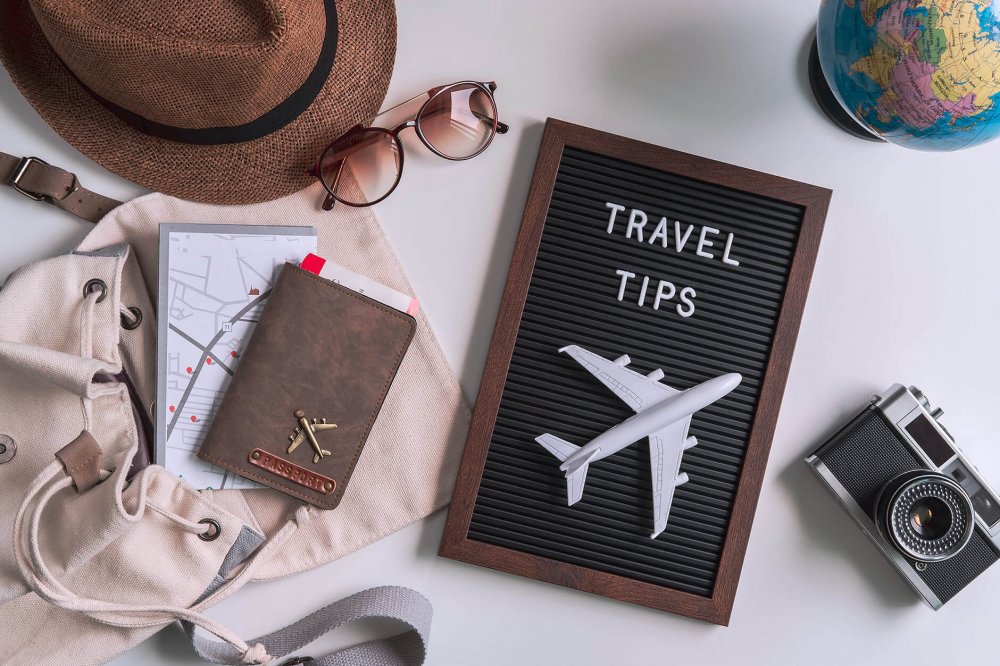
Hitchhiker's guide - what you should know?
How to hitchhike safely and effectively - practical tips. Everything you need to know before you go on a hitchhiking trip.
11 August 2021

There are various methods of packaging that have their pros and cons. The most important thing is to adjust the luggage to your needs, to the place of departure, to what we plan to do during the journey. It should also be adapted to our style of travel. Packing for travel items that are on the list also requires their proper selection, can not be accidental. How to do it? We present the 10 most important principles in our opinion, the application of which will allow you to pack well. The luggage prepared according to them will facilitate every journey.
Suitcase, bag or backpack - customize your luggage in terms of dimensions, weight (and whether you will carry it and for how long). Then - when you decide - choose the smallest possible size in which you can fit everything.
With large suitcases, we often take more than we need, because we want to stuff it - after all, there is still room... A smaller suitcase will make you wonder if you really need something. Remember not to force her.
If you're not sure how to choose the right size for your luggage you can read more in those free guides:
Travel is not the best opportunity to test a new wardrobe. Do not buy clothes especially for travel. It may turn out to be uncomfortable, you will not like them, they will not be warm or airy enough. Shoes put on for the first time may wipe you off. It often turns out that you don't feel well and confident in new things.
Pack what you need, not what you want to take or it may be useful.
First of all, give up things that you do not use every day, but you count on getting started on the go. If something was not needed, but it will be - you will buy it.
It is also worth knowing what to really buy after reaching the place.
Also remember that if you are not going on a really extreme trip, do not take specialized clothes that you do not like, you do not want to wear them and feel bad in them (and sometimes you still have to spend money on them). Sometimes militias or fleece can really replace a warm sweatsuit ...
This is what the list will not say, but it can indicate where to start. Thanks to it you can plan the number of individual items of clothing.
What should be done next is to match them together. The color, style and cut must be chosen so that they can be freely combined. This way you can easily choose the outfit for the day and you will have the impression that you have more clothes because you can create many combinations from them. This will be great not only when you put on casual, but also when you need outfits with varying degrees of formality.
3 tops to one bottom - choose 3 blouses, shirts, T-shirts for one pair of pants or shorts and 3 dresses or suits for one jacket or other outerwear
This is a good method, but depending on the trip requires personalization in terms of weather, number of days and most of all our plans. However, you can choose the basics that will always work.
Always pack things so that they are not damaged - wrap delicate items in a scarf, socks or put them in your shoes. However, if you can avoid packing glass or fragile items - do it.
Something that may spill - pour into safer packaging, e.g. plastic and more airtight. Remember that packaging of shampoos or cleansing gels may, especially when pressure changes, open and spill out. Before closing, protect them from closing with a piece of foil and additionally store them wrapped in a foil bag.
You can use sachets to pack clothes. They will provide more protection if you want to make sure that nothing is destroyed.
Avoid cosmetics that can crumble and also dirty all your luggage. Protect eye shadows or powders with something soft inside, e.g. with cotton pads.
As we advise in previous points - think what is needed, what fits together and what will fit. Prepare all things and only then put them in a suitcase. Do not throw random things into it, which you will find in the wardrobe or they will fall into your hands and will seem useful.
Avoid stretching the packaging process over time. Then you forget what has already been packed, whether it will match the rest and whether you take the same several times.
In addition, if we do not pack things according to their weight and purpose, but accidentally - we will not avoid creases, and the luggage will be less organized, thus less comfortable and handy.
Don't take big packages. If you are going away for a long time - you will definitely buy cosmetics on site that you will use before. It is also worth using miniature versions of products, if we do not have such - pour into smaller packages. While translating the face cream into lens packaging already seems absurd, the mini packaging and bottles available in stores will work great.
You can also use samples of cosmetics at home (beware! Without too much experimenting, which will result in an allergic reaction). Minimalism in traveling is also to avoid things that you will use only once or to take too many of them, e.g. additions, because you do not know what day you will feel like wearing. Choose them wisely - take a few and only universal ones.
If you're not traveling alone - share the products you both use. If you're traveling with a partner, family member or just a loved one, the matter is simple. When you pack completely separately, e.g. with friends on a trip together - arrange who takes what.
Some trips are really better organized if we share things, and thus no one carries excess baggage. We are not saying to share everything ... but maybe 5 mini speakers will not be useful when travelling together?
Choose things wisely. Take things that have several uses, such as:
The Kindle will be a lot lighter than books, but if you don't have one, maybe it's worth making an appointment and exchanging readings with friends while traveling?
If you take a travel pillow, to avoid neck pain - choose inflatable or tourist - rolled up in a ball.
Think also about multi-functional cosmetics, such as palettes, with which you can do all face makeup or cream blushes with several uses. A good body cream will replace balm and hand cream.
There are several ways to fold and pack clothes. They differ depending on whether we choose a backpack, a suitcase or a bag. We will discuss how to package each of them soon. There are many methods - rolling and rolling clothes, arranging subsequent elements flat, in layers, or packing them vertically next to each other. Choose the option that suits you best and learn more about each method in this article - we've added also a video tutorial to make it easier!
It is worth testing which clothes in our suitcase crumple and how they behave differently packed. These methods have advantages and disadvantages. However, there are general principles that should always be considered. It's such a universal way of packing:
In our opinion, the above principles are crucial to make luggage useful and make travelling easier, instead of burdening us with no sense. Let's remember that each of us knows our needs best and only we can assess what we need during the trip. Let's not blindly follow how someone sees packing for travel, but let's also do it responsibly and with a headache.
If you find the above tips useful share it with someone who might need a little help with packing.